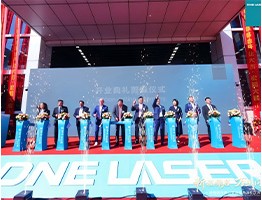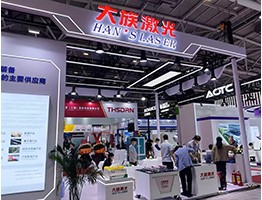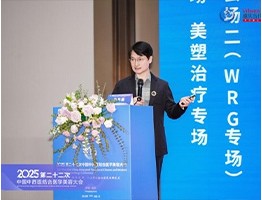Laser Tech: 'Core Engine' for Trillion-Dollar Low-Altitude Economy
source:Shenyang City Society for Spec
keywords:
Time:2025-11-20
Source: Shenyang City Society for Special Processing 8th Nov 2025
Guide: 2024 marked the dawn of a new era for the low-altitude economy: it was included in the Government Work Report for the first time, the National Development and Reform Commission (NDRC) established a special agency for overall promotion, and frontier cities such as Shanghai and Shenzhen issued and implemented detailed rules simultaneously. Authoritative data shows that the market size of the low-altitude economy will exceed 850 billion yuan in 2025, and is expected to grow into a trillion-yuan blue ocean market by 2030. Amid this wave of industrial transformation, laser technology, with its distinctive advantages of precise positioning, intelligent regulation, and efficient operation, has undoubtedly become the core "technology engine" driving the high-quality development of the low-altitude economy.
Three Core Application Scenarios of Laser Technology:
In the field of measurement, lidar serves as the "intelligent eyes" of aircraft. It not only provides early warnings of hidden dangers from tree obstacles on power transmission grids and conducts efficient inspections of photovoltaic panels, but also offers precise takeoff and landing guidance for drones. In 2025, this technology has shone brightly in scenarios such as water conservancy digital twin construction and geological disaster prevention, and will move toward the advanced form of "five-dimensional perception" in the future.
In the field of weapons, laser weapons, with distinct advantages such as instant response and millimeter-level precision, have built a "steel barrier" for low-altitude security. Taking the OW5-A50 high-energy laser air defense system as an example, it can effectively intercept saturation attacks by drones, becoming a strategic weapon to safeguard airspace security.
In the field of manufacturing, laser cutting, welding, and 3D printing technologies are driving the iterative upgrading of low-altitude equipment such as drones and eVTOLs (electric Vertical Take-Off and Landing aircraft). The high-precision laser 3D printing equipment launched by Formlabs Inc. of the United States is a typical representative of technology empowering industrial innovation. Through this article, readers will gain a comprehensive insight into how laser technology injects strong momentum into the low-altitude economy from multiple dimensions and drives the industry into a new stage of high-quality development.

Laser Technology: The "Core Engine" Powering the Takeoff of the Trillion-Yuan Low-Altitude Economy
2024 marked a milestone in the development of the low-altitude economy — this emerging field was incorporated into the Government Work Report for the first time, the National Development and Reform Commission (NDRC) specially established the Department of Low-Altitude Economy Development to coordinate industrial advancement, and frontier cities such as Shanghai and Shenzhen simultaneously launched special action plans, charting a clear course for industrial growth. According to institutional estimates, the market size of China’s low-altitude economy will exceed 850 billion yuan in 2025, and is expected to enter the "trillion-yuan scale" track by 2030. In this promising industrial blue ocean, laser technology, with its unique advantages of precision, intelligence, and efficiency, is deeply penetrating key fields such as measurement, weapons, and manufacturing, becoming the "technology engine" driving the high-quality development of the low-altitude economy.
Measurement Field: Laying a Solid Foundation for Low-Altitude Safety and Efficiency with Precise Perception
The core logic of the low-altitude economy lies in achieving deep integration between "low-altitude aircraft" and "ground economic scenarios," and laser perception technology is precisely the "intelligent eyes" that endow aircraft with the ability to perceive the environment and avoid risks. Among them, lidar plays a particularly critical role — it can accurately convert optoelectronic signals in the low altitude below 300 meters into analog data, enabling equipment such as drones and eVTOLs (electric Vertical Take-Off and Landing aircraft) to clearly "perceive" the surrounding environment and provide core support for safe operations.
In specific scenarios, the value of laser perception technology is fully demonstrated. In the field of power transmission grid operation and maintenance, excessive tree growth is prone to forming "tree obstacles," which may interfere with the normal operation of transmission lines and even cause safety accidents. Drones equipped with laser perception systems can accurately scan the growth status of trees, predict tree obstacle risks in advance, and eliminate potential hazards in the early stages; in the photovoltaic industry, the combination of laser technology and precise positioning technology enables efficient inspections of photovoltaic panels, quickly identifying panel defects, open or short circuits in lines, and other issues, helping power stations conduct timely maintenance and ensuring stable power generation.

Even in the fundamental process of drone takeoff and landing, laser technology is indispensable. To achieve true "unmanned operation," laser alignment technology enables drones to take off and land precisely at night or in complex venues — operators thousands of miles away can rely solely on laser guidance to ensure drones complete smooth takeoffs and landings. When multiple drones need to take off and land simultaneously in a limited area, the "collaborative obstacle avoidance + precise guidance" mechanism supported by laser technology can effectively prevent collisions, significantly enhancing the safety and efficiency of low-altitude activities.
In 2025, the practical applications of laser measurement technology have become even more widespread. In the water conservancy sector, the "digital twin project" promoted by South Surveying & Mapping in June 2025 has achieved remarkable results. By equipping drones with lidar and collecting data in conjunction with Beidou control points, the project successfully constructed high-precision 3D models, providing reliable data support for intelligent dispatching tasks such as watershed extraction and inundation analysis. In the field of geological disaster prevention and control, Mianzhu City, Deyang, has been using lidar-equipped drones since February 2025 to conduct aerial surveys of 12 high and steep dangerous areas. With over 400 laser point clouds per square meter capable of penetrating vegetation cover, the technology accurately identifies hidden hazards such as mountain cracks and landslides, offering crucial technical guarantees for disaster prevention and mitigation.
As technology continues to iterate, the "perceptual capabilities" that lasers endow drones with are constantly upgrading. In the future, drones are expected to achieve "five-dimensional perception" — just as humans perceive the world through vision and touch, drones will be able to simultaneously collect visible light, infrared images, and lidar point cloud data, elevating the "perceptual precision" and "environmental adaptability" of low-altitude operations to new heights.
Weaponry Field: Safeguarding the Low-Altitude Security Boundary with Efficient Defense
The modern security landscape clearly shows that the low-altitude domain is not an "absolute safe zone" — threats such as drone swarm attacks and illegal intrusions exist objectively, creating an urgent need for reliable defense measures. Against this backdrop, laser weapons, with their core advantages of "fast response, high precision, and long-range interception," have become the "hardcore shield" for safeguarding low-altitude security.
In terms of technical characteristics, the response speed of laser weapons is measured at "the speed of light," enabling them to instantly lock onto and neutralize intruding targets (such as small drones) in low-altitude and ultra-low-altitude airspace. Their firepower transfer speed is extremely fast, allowing them to engage multiple targets simultaneously — making them particularly suitable for defending against saturation attacks like "drone swarms." Additionally, for low-altitude equipment performing special tasks such as police and military operations, laser weapons can serve as "self-defense systems," helping the equipment resist harassment from enemy small aircraft in complex low-altitude environments and fortifying a "technological defense line" for low-altitude security.

In July 2025, the OW5-A50 High-Energy Laser Air Defense System unveiled by Norinco Group further demonstrated the combat potential of laser weapons. With a power rating of 50 kilowatts, the system can lock onto targets within 5 kilometers in just a few seconds, successfully repelling multi-directional drone saturation attacks in simulation tests. More notably, its built-in diesel generator set enables 48 hours of autonomous power supply for scenarios such as border outposts, significantly enhancing deployment flexibility and sustained combat capability in complex environments.
Manufacturing Field: Driving the Upgrade of Low-Altitude Equipment with Core Technologies
The development of the low-altitude economy is inseparable from the support of core equipment such as drones and eVTOLs, and laser manufacturing technology is precisely the key force driving these equipment to transition from "design blueprints to practical applications," providing "core momentum" for the industrial upgrading of low-altitude equipment.
In the component processing link, laser cutting and laser welding are two "core processes." Laser cutting enables "high-precision and high-speed" processing of metals and composite materials, easily creating aircraft components with complex shapes and strict precision requirements, meeting the high structural accuracy demands of low-altitude equipment. Laser welding, on the other hand, can achieve precision joining of different materials, not only ensuring the joint strength of components but also improving sealability, further enhancing the reliability and durability of aircraft.

Laser 3D printing technology has taken low-altitude equipment manufacturing to unprecedented heights. It enables the rapid production of complex structural components that are difficult to achieve with traditional processes, not only significantly shortening the R&D cycle of low-altitude equipment but also effectively reducing manufacturing costs. This technology drives aircraft toward "lightweight and high-efficiency" evolution — for instance, optimizing the structural design of eVTOLs through laser 3D printing can make their fuselages more compact and extend their endurance.
At the 2025 TCT Shenzhen Exhibition, practical applications of laser manufacturing technology further validated its value: Formlabs showcased its Fuse1+30W laser sintering printer, which has been successfully applied to drone frame production; its stereolithography (SLA) printer Form4 provides support for eVTOL manufacturers, enabling the rapid creation of 1:1 scale prototypes for aerodynamic testing and accelerating product development.
Conclusion
The curtain has officially risen on the trillion-yuan low-altitude economy. Laser technology, through "multi-dimensional penetration," is deeply integrated into every critical link of this industry — serving as the "intelligent eyes" guaranteeing safety and efficiency, the "safety shield" resisting risks, and the "craftsman's hands" driving equipment upgrades. The synergistic advancement of laser technology and the low-altitude economy not only removes obstacles and injects strong momentum into the low-altitude economy but also brings "explosive growth opportunities" for laser technology in this trillion-yuan market. In the future, as technological integration deepens, laser technology and the low-altitude economy will spark more innovative breakthroughs, jointly writing a new chapter in high-quality industrial development.
 4th Collaboration! What Did the Global Laser Giant Bring to Chinese Univs & Leading Laser Firms?
4th Collaboration! What Did the Global Laser Giant Bring to Chinese Univs & Leading Laser Firms? DNE Laser Foshan Smart Mfg Base Grand Opening: New Brand Image Starts New Journey
DNE Laser Foshan Smart Mfg Base Grand Opening: New Brand Image Starts New Journey Live: DMP GBA Expo – Laser Hard Tech Leads Industrial Smart Manufacturing New Wave
Live: DMP GBA Expo – Laser Hard Tech Leads Industrial Smart Manufacturing New Wave Scientists Develop Palm-sized Short-pulse Laser System: Efficiency Increased to 80%
Scientists Develop Palm-sized Short-pulse Laser System: Efficiency Increased to 80% Global LiDAR Giants Engage in Escalating Patent Wars
Global LiDAR Giants Engage in Escalating Patent Wars
 Shi Lei (Hipa Tech): Focus on Domestic Substitution, Future Layout in High-End Laser Micromachining
Shi Lei (Hipa Tech): Focus on Domestic Substitution, Future Layout in High-End Laser Micromachining Optizone Technology: 17 Years Devoted to Optics – High-Power Optics Mass-Production Pioneer
Optizone Technology: 17 Years Devoted to Optics – High-Power Optics Mass-Production Pioneer Zhuojie Laser: Breaking barriers via tech breakthroughs, aiming to lead high-end light sources
Zhuojie Laser: Breaking barriers via tech breakthroughs, aiming to lead high-end light sources Dr. Sun Linchao: Pioneer and Leader in China's Field of Medical Aesthetic Laser Therapy
Dr. Sun Linchao: Pioneer and Leader in China's Field of Medical Aesthetic Laser Therapy Guo Guangcan, CAS Academician & USTC Professor: Four Decades Chasing Quantum "Light"
more>>
Guo Guangcan, CAS Academician & USTC Professor: Four Decades Chasing Quantum "Light"
more>>










